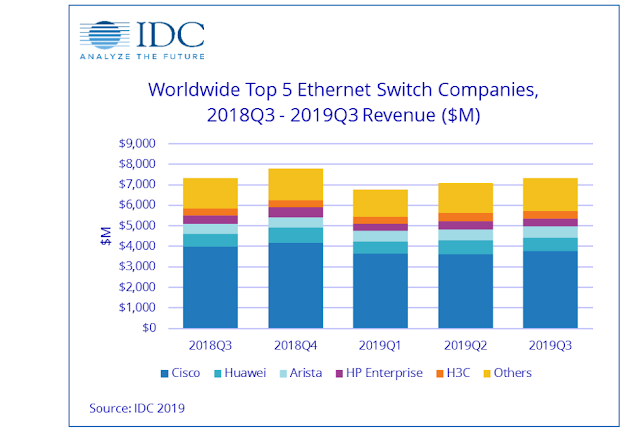Ericsson reached a settlement with the U.S. Department of Justice (DOJ) to resolve criminal charges related to accounting violations in five countries, including in Djibouti where there is also a charge of bribery.
Under the agreement,
Ericsson noted that the penalties outlined above are fully covered by the SEK 11.5 b. provision taken in Q3 2019.
Under the agreement,
- Ericsson will pay a fine of US$520,650,432.
- Ericsson's Egyptian subsidiary has entered a guilty plea to the bribery charge in Djibouti.
- Ericsson will resolve civil charges brought by the Securities and Exchange Commission (SEC) relating to allegations of violations of the bribery and accounting provisions.
- In total, Ericsson will pay US$1.06 billion (SEK 10.1 b.).
- Ericsson will engage an independent compliance monitor for a period of three years while the company continues to undertake significant reforms to strengthen its Ethics & Compliance program.

Ericsson noted that the penalties outlined above are fully covered by the SEK 11.5 b. provision taken in Q3 2019.
Ericsson makes US$1.23 billion provision for U.S. investigation
Ericsson made a provision of SEK 12 billion (US$1.23 billion) to resolve the ongoing investigation by U.S. authorities. The process to find a resolution is still ongoing, but Ericsson reckons it may face a monetary sanction of US$1 billion.
As previously disclosed, Ericsson has been co-operating voluntarily since 2013 with an investigation by the United States Securities and Exchange Commission (SEC) and, since 2015, with an investigation by the United States Department of Justice (DOJ) into Ericsson’s compliance with the U.S. Foreign Corrupt Practices Act (FCPA) and the process is still ongoing. The investigation covers a period ending Q1 2017 and revealed breaches of the Company’s Code of Business Ethics and the FCPA in six countries: China, Djibouti, Indonesia, Kuwait, Saudi Arabia and Vietnam.
The company previously communicated that the resolution of the investigations will result in material financial and other measures. While Ericsson cannot comment in detail on the ongoing process with the U.S. authorities, the Company can with current visibility now estimate the cost and thus make a provision, which will impact the third quarter 2019 results by SEK 12 b. The provision constitutes the Company’s current estimate of expenditure related to resolving the U.S. investigations, of which the combined monetary sanctions from SEC and DOJ is estimated at USD 1 b., and the remainder pertains to other costs related to resolving the investigation. The provision will be booked as Other Operating Expenses in the income statement of Segment Emerging Business and Other.
Börje Ekholm, President and CEO, says: ”Over the last two years we have operationally turned around our company and established a strong portfolio and competitive cost structure. With today’s announcement we confront another legacy issue and take the next step in resolving it. We have to recognize that the Company has failed in the past and I can assure you that we work hard every day to build a stronger Ericsson, where ethics and compliance are cornerstones in how we conduct business. Over the past two years, we have made significant investments in our ethics and compliance program including our investigative capabilities and have taken actions against employees who have transgressed our values and standards.”
As previously disclosed, Ericsson has been co-operating voluntarily since 2013 with an investigation by the United States Securities and Exchange Commission (SEC) and, since 2015, with an investigation by the United States Department of Justice (DOJ) into Ericsson’s compliance with the U.S. Foreign Corrupt Practices Act (FCPA) and the process is still ongoing. The investigation covers a period ending Q1 2017 and revealed breaches of the Company’s Code of Business Ethics and the FCPA in six countries: China, Djibouti, Indonesia, Kuwait, Saudi Arabia and Vietnam.
The company previously communicated that the resolution of the investigations will result in material financial and other measures. While Ericsson cannot comment in detail on the ongoing process with the U.S. authorities, the Company can with current visibility now estimate the cost and thus make a provision, which will impact the third quarter 2019 results by SEK 12 b. The provision constitutes the Company’s current estimate of expenditure related to resolving the U.S. investigations, of which the combined monetary sanctions from SEC and DOJ is estimated at USD 1 b., and the remainder pertains to other costs related to resolving the investigation. The provision will be booked as Other Operating Expenses in the income statement of Segment Emerging Business and Other.
Börje Ekholm, President and CEO, says: ”Over the last two years we have operationally turned around our company and established a strong portfolio and competitive cost structure. With today’s announcement we confront another legacy issue and take the next step in resolving it. We have to recognize that the Company has failed in the past and I can assure you that we work hard every day to build a stronger Ericsson, where ethics and compliance are cornerstones in how we conduct business. Over the past two years, we have made significant investments in our ethics and compliance program including our investigative capabilities and have taken actions against employees who have transgressed our values and standards.”


















